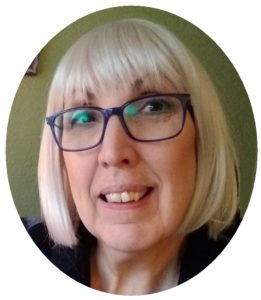“. . . the gray area between “good” and “bad” and include [s]situations we wouldn’t want to experience in real life
— and just like any story, they’re not for everyone.”
~ Jami Gold
I’ve been crafting a content warning statement that addresses one of my series’ ongoing themes: the slow healing of trauma. Whether or not to include a warning was something I had to consider.
Around the early 2000s, the use of content warnings (also called trigger warnings) become prevalent in education. Framed as trauma-informed pedagogy, the notion is that a person who has experienced trauma can be impacted by the content of a given environment. The concept is often seen in writing now with the author needing to decide how extensively they will want to warn their readers, if at all. A key issue is how much a writer “owes” the people who read their books.
I’ve looked at statements written by other authors and one, Jami Gold, an author of paranormal romance, focuses specifically on the reader experience She notes that in addition to “explor[ing] the gray area between ‘good’ and ‘bad’” she will “include situations we wouldn’t want to experience in real life,” sensibly concluding that “and just like any story, they’re not for everyone.” [1]
Jami Gold’s commentary focuses more on the reader experience. She adds that “While some readers appreciate a heads up of content that might be uncomfortable for them, many readers want to experience a story without any hints of what’s to come.” [2]
Elizabeth A. Cartwright (Liz), an editor, graphic designer, and author takes the discussion a bit further in her 2024 thoughtful and useful essay about content warnings. She strikes a balance which I like. In her paragraph with the heading “Do I need to use content warnings?” she threads the careful needle of coddling or censorship. “Others,” she says, “will go as far as to say content warnings encourage censorship and hamper learning, by allowing people to shy away from content that would be otherwise valuable to consume.” [3]
There’s some historical sociology going one here, I warrant, of the variety of people who grew up under a tough love regime or were simply ignored. A kind of ‘boomer mentality’ I suspect, where the idea is “well I had it rough and survived, so you can/should too.” Fast forward to the helicopter parenting era where it seems every emotion and experience is to be protected and shielded.
Having been at the receiving end of sexual assault, stalking, and harassment, I have reflected on what sort of warnings I myself would want. In theory, I am the perfect audience for warnings. For me, and this is strictly personal (I would not presume my experience and decision applies to anyone but myself), I would prefer not to have them on page (on an author’s website, if under its own heading, would be okay). But my situation is perhaps unusual. Besides working with a therapist, which let me get a grip on things, I have two degrees in reading and critiquing literature and two more in analyzing and classifying works in the humanities and social sciences. Therapy and education, and later several decades as an information professional specializing in indexing, qualitative concept analysis, and information finding have given me a kind of objectivity in terms of reading texts.
Objectivity as in terms of distance, not approval. And that’s with regard to text only. I am extremely visual with an imagination that can go wild, so I avoid the horror and thriller genres both on screen and on page. I don’t need to provide fodder for nightmares.
As my current writings are murder mysteries, I have given considerable thought as to how extensively my readers should be forewarned. I don’t think it is my responsibility to protect people as no one is forcing them to read my books. I do appreciate, though, that I am writing outside the so-called cozy or sentimental approach, not thrillers precisely, but stories that have intense, graphic moments. And I respect my readers and the times, which are so difficult now, and so hurtful.
What I am doing, and quite intentionally, is exploring how a small group of people diverse in terms of their personalities, genders, sexualities, expertise, personal histories, and ethnicities find themselves gradually creating a chosen family over time. Their individual stories contain difficulties and traumas that some readers may find difficult.
If you have a question or comment for me, drop me a line via my Contact page. You can see a wider view of my creative world on my Instagram page.
© J.A. Jablonski 2025. All rights reserved.
How to cite this post
Jablonski, J.A. (2025, Sept 16). Gray Areas and Content Warnings. Blog post. J.A. Jablonski (website).
https://jajablonski.com/2025/09/16/content-warnings/
SOURCES
[1, 2] From Gold’s website page on Content Guidance: https://jamigold.com/for-readers/guidance/
[3] Cartwright’s blog post can be found here: https://www.ec-editorial.com/post/content-warnings
IMAGE ID & CREDITS
Header image is a close-up of the female face from “The Green Masque” by Oswald Birley (1922) superimposed over a swirling blue background. There was no AI used in creating this slide. Some years ago I used the old PICAS image editor to “posterize” the face, then recently changed its hues and fading via the SnagIt Editor app.
Photo Credit: The blue background by Pawel Czerwinski via Unsplash.



